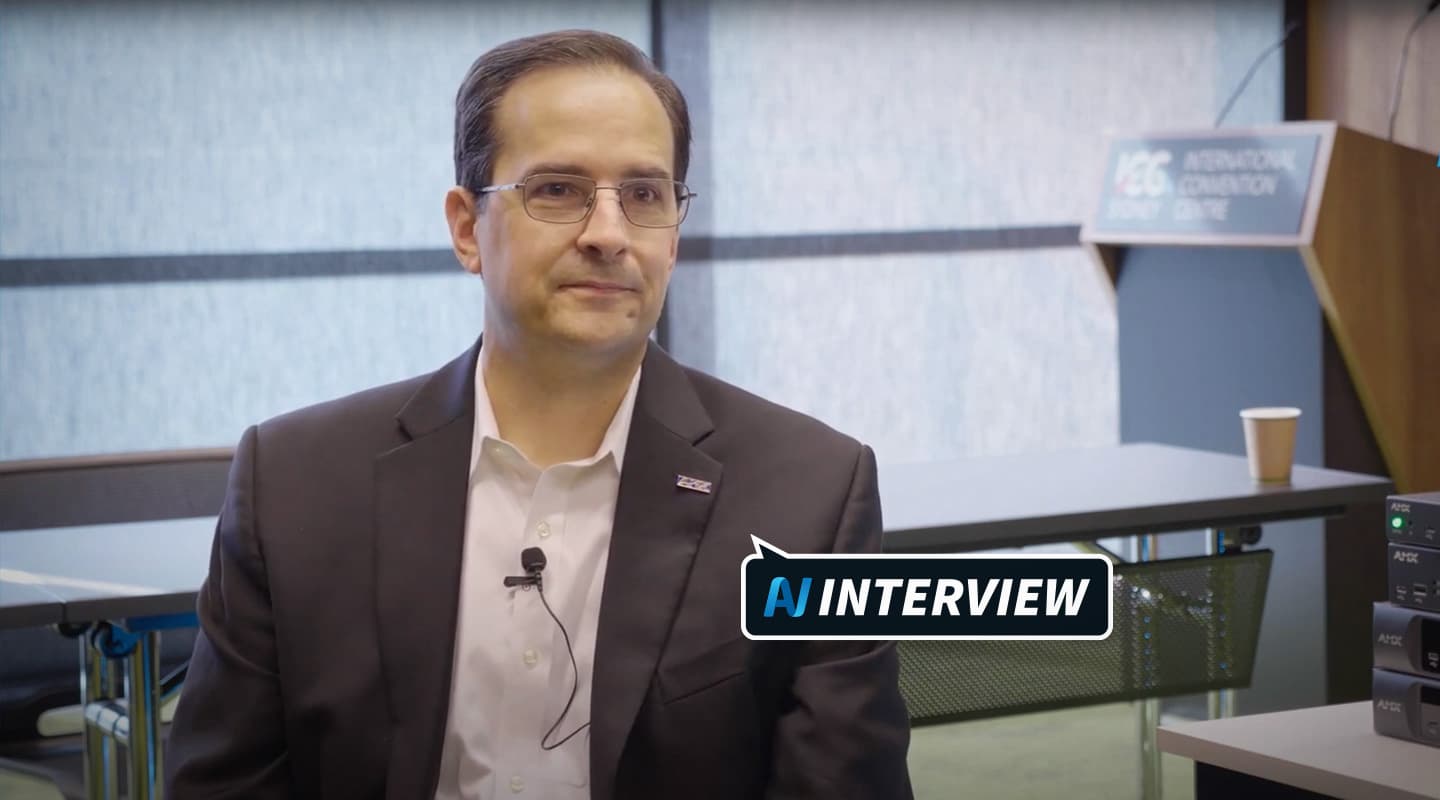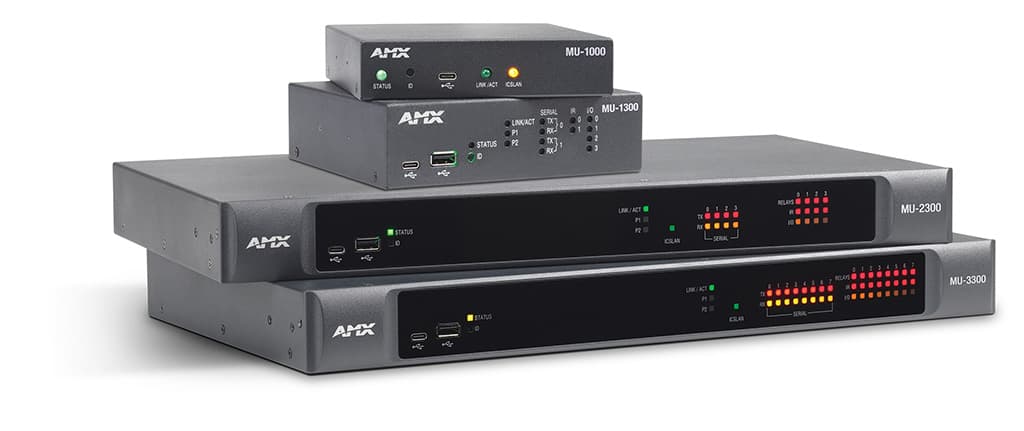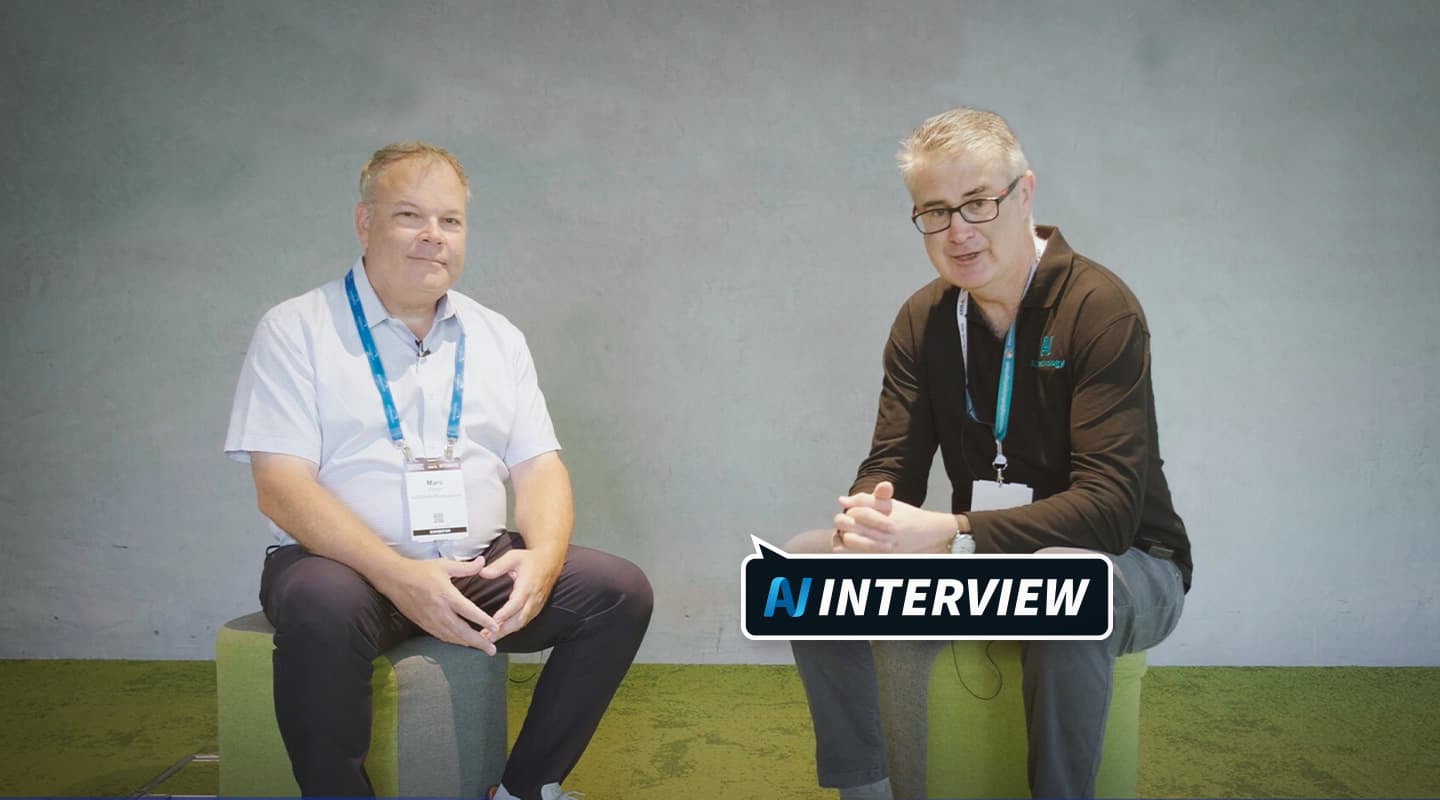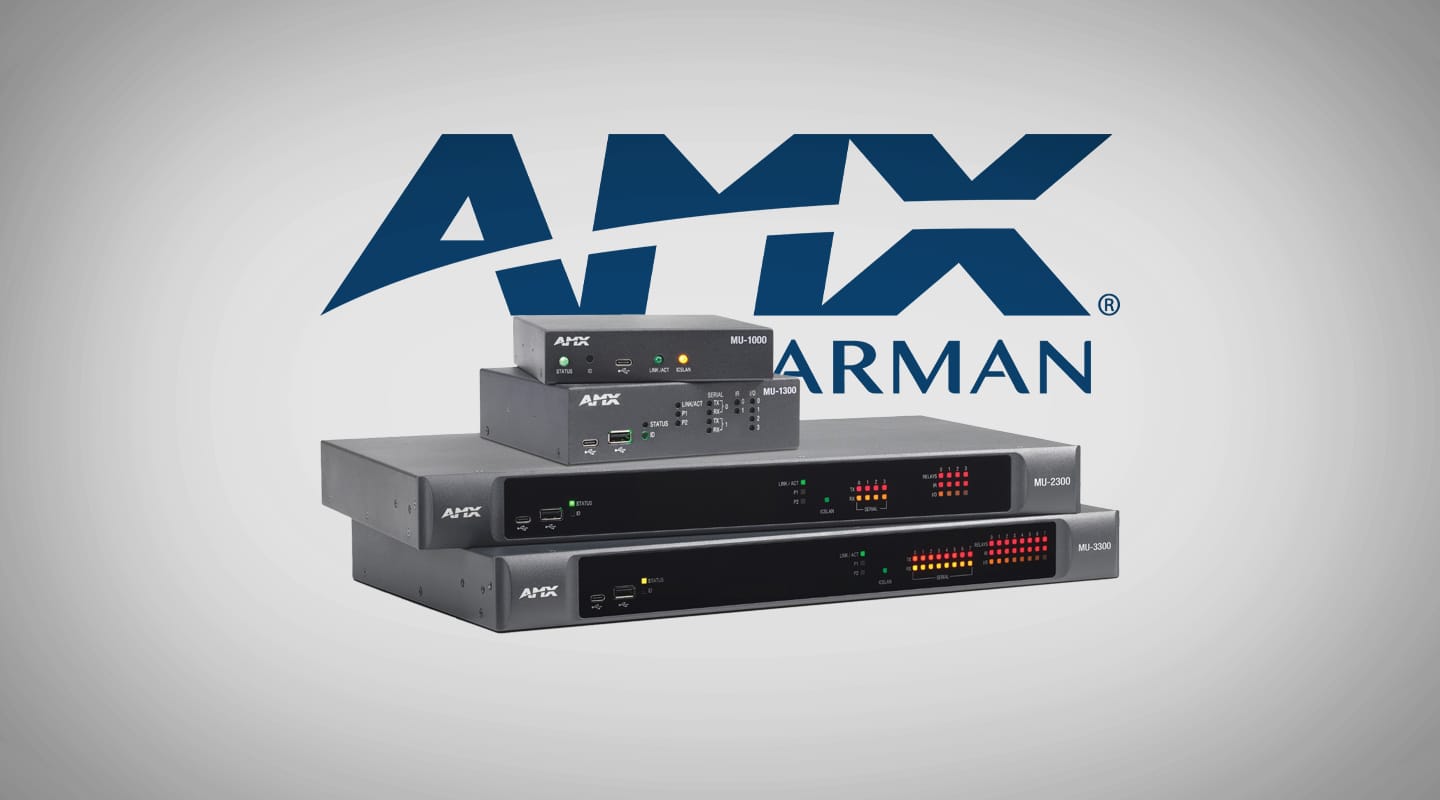
AV Interview: Jeff Burch, Harman Professional
HARMAN's Head of Product Management for Video and Control travelled to Australia to give the ANZ market a sneak peak of MUSE, the new AMX control system.
Interview:/ Christopher Holder
Jeff Burch controls control… he’s the control controller. By which I mean, all things AMX fall under his watch, including the new AMX control system, MUSE.
The legacy AMX control platform NetLinx is emblematic of the old AMX. With its proprietary programming language and software, it served the old AMX ‘walled garden’ well, and still does
MUSE takes a steamroller to the walled garden. For starters, you can choose which language you want to program in — Python, Groovy, JavaScript and/or visual flow-based programming using Node-RED. Muse represents a huge leap forward for AMX, and the Harman Pro ecosystem more generally.
I sat down with Jeff at the Integrate expo to talk some more about MUSE. I started by asking Jeff about how MUSE complements the recent spate of AMX hardware releases.
Jeff Burch: The first key, related products are the CE, or Control Extension boxes. They’re Ethernet-to-serial or IR or relay. We’ve traditionally had boxes like these in our portfolio but they were inside our walled garden — you could only use them with an AMX controller and if you didn’t have an AMX controller, they were paperweights. So these new CE boxes are a departure. We gave them an open API so anybody can use them. If you like our CE Series boxes but want to use a competitor’s control system, you can — we’ve published the API and you can do that.
We also came out with the Varia line of touch panels, which are also quite a departure from the old walled garden concept. In the past, our touch panels only worked with Netlinx processors and if you didn’t have Netlinx the panels were effectively useless. But we’ve developed the new Varia panels on standard Android and we allow you to use it in a web kiosk mode, such that you can create your own user interface. But we also let you write your own Android app, so you can literally load an Android control app with the user interface onto the touch panel and use it like that. So that’s a real break from the old ‘nope, you have to use it our way and only with our gear’ philosophy.
Now, MUSE is the is the extension of that. We’ve laid some of that groundwork and now MUSE is the control piece that is also open — open to multiple programming languages and multiple development environments.

AV: When you tear down the walled garden, I imagine it creates challenges of its own?
JB: The biggest challenge is: how do we make sure everything works together when we are now leveraging all these open standards. The answer is, HControl, which is the glue that pulls that together. HControl is the name we’ve given to our new API and a replacement to ICSP and Hi-Qnet. In fact, HControl is our messaging protocol for all of Harman Pro products — JBL, BSS, Crown… across the board, they’re all using HControl. In fact, the scripting engine in MUSE is actually not just for our AMX-branded boxes. Any place within Harman Pro where we’re using control, then MUSE is the control platform that’s going to be in there.
The downside to opening the walled garden is you can’t control how people use your product and you may lose some share of pocket if you don’t keep people buying your other products and make it too easy for them to go and get a competitive product. But if you choose to stay in the Harman Pro ecosystem then Manager, Designer and Architect — the three key pieces of this toolset we’re creating — help everything to work seamlessly together: everything shows up and you can simultaneously load code to various products at the same time — not just loading all the controllers, but now you can send to BSS boxes and others
If we really fall short in an area of our product portfolio and fail to entice people to purchase from us, then that’s on us — we need to step up in that area. We should make it easy for them to go find something else and still use Harman product that best suits them.
AV: AMX has been in the control wilderness for a while now. What technology tectonic plates have moved, in your opinion, that’s allowed you to leapfrog ahead with MUSE?
JB: NetLinx is a fabulous event-driven language. It was launched in a time when there weren’t a lot of good event-driven, reasonably easy-to-program languages around, and it provided so many shortcuts. But one of the tectonic shifts has been the arrival of languages like Python that have been very widely adopted and have a lot of extensibility. Python is one of those languages where you can learn a little bit and write a lot of code that works. But as you learn more, you learn better and easier and simpler and more powerful ways to do some of those same things. That’s one big shift, just the advancement in the language, the tool sets, available, the development environments… There wasn’t a convenient development environment for people in the AV space; they needed something and we filled those needs. Now, we’re not the best people to fulfil those needs because there are so many other bigger categories with modern programming languages and modern IDs.
AV: What’s your assessment of the market and the response so far from the Australia/NZ market?
JB: The response has been really, really positive. And again, NetLinx isn’t going away. We know we have a number of very loyal NetLinx customers that have tens of thousands of lines of code already developed. We are still supporting that. We’re still still delivering all the NX products.
Saying that, if you’re a NetLinx programmer and you want to expand, what horse do you back? One of the powerful things about MUSE having three different languages — with the ability to expand the number of languages we support — and being able to run and debug them simultaneously, is that people don’t have to worry about what horse they’re backing, right? They can’t go wrong picking any of those three — Python, Groovy or JavaScript.
And the amount of support you get on a site like Stack Overflow or YouTube… If you’re trying to do something in one of those languages, it’s almost guaranteed somebody else has already tried to do it, figured out the best way to do it, and provided that to the community.
AMX: www.amx.com
MadisonAV: www.madisonav.com.au





RESPONSES